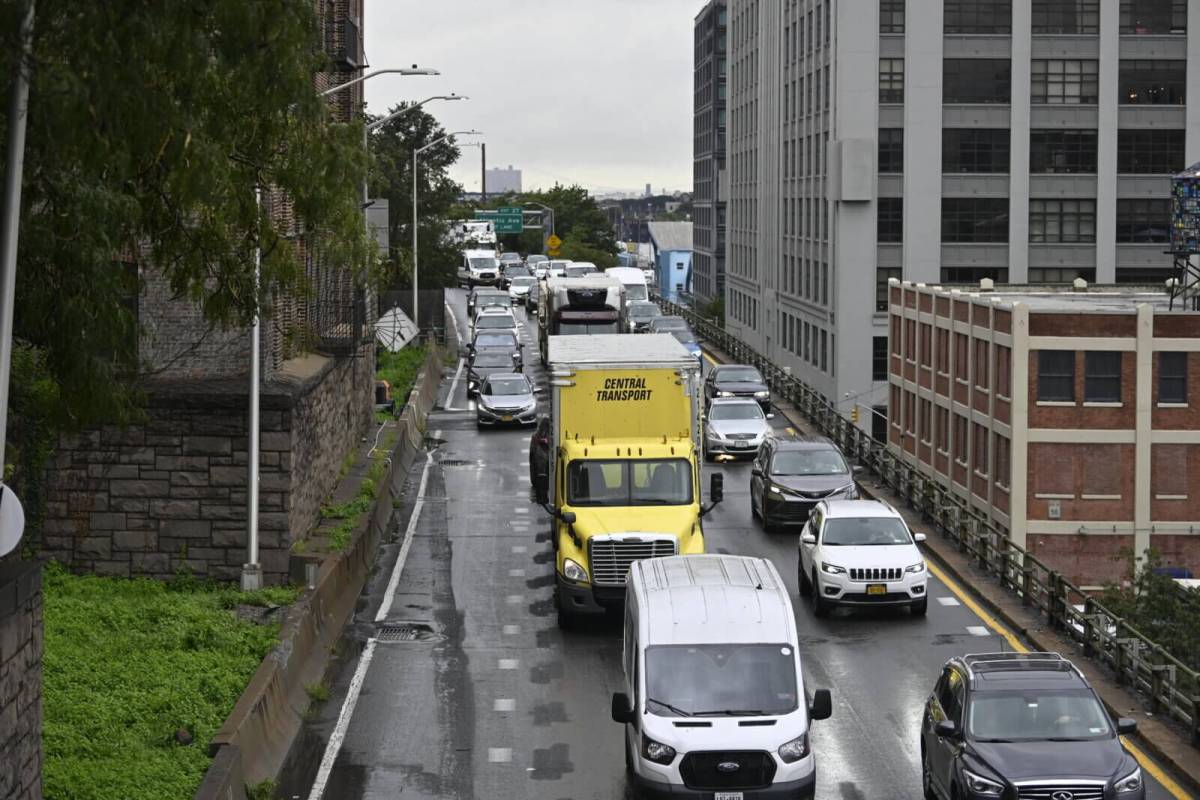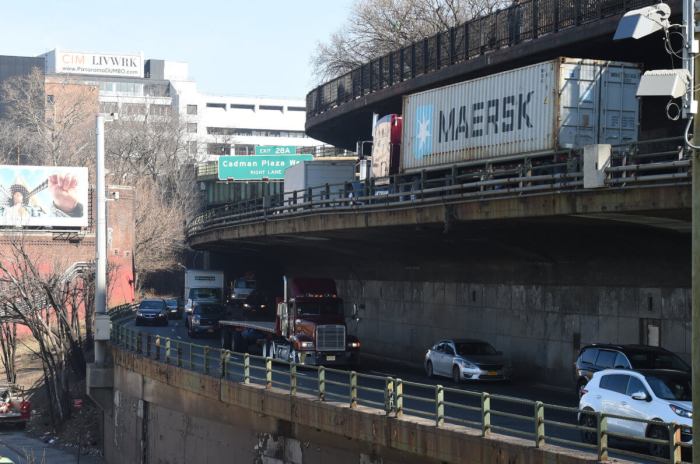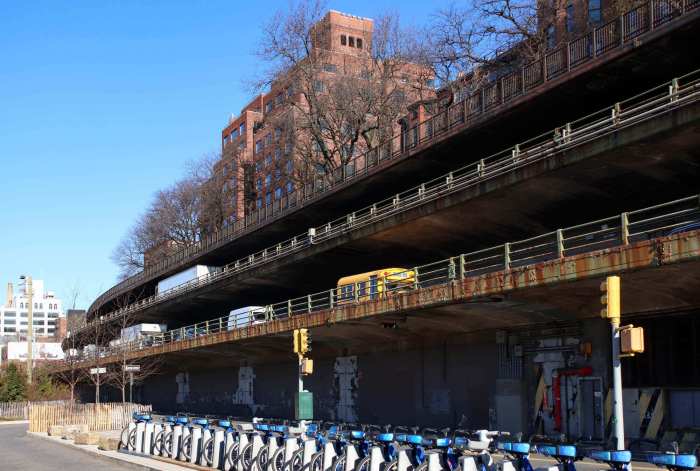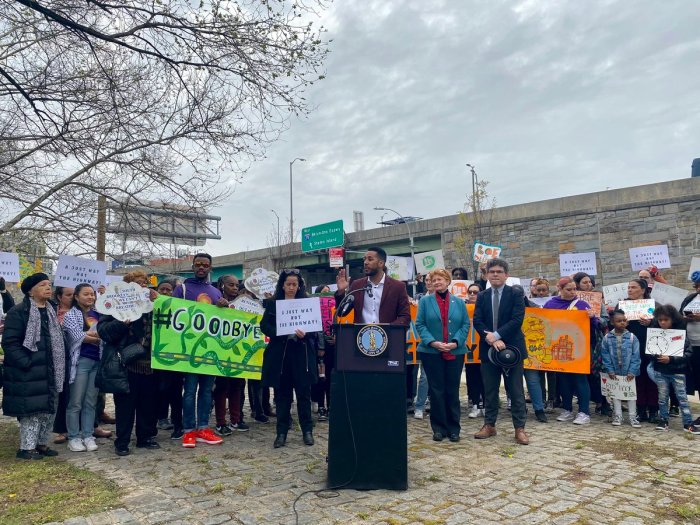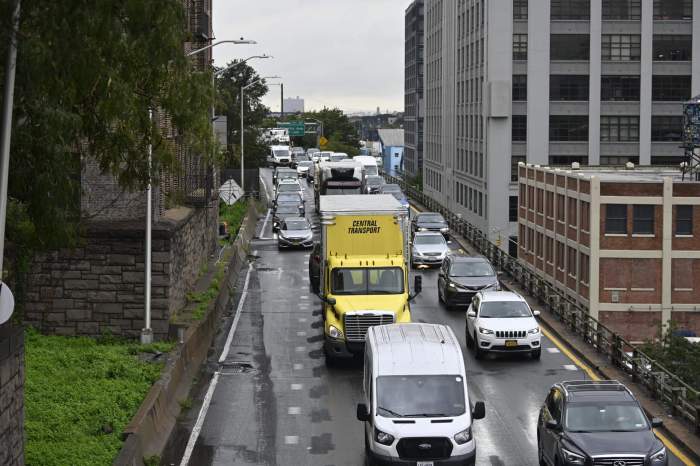The city has been awarded a $5.6 million federal “Reconnecting Communities & Neighborhoods” grant to help revamp the northern and southern stretches of the infamous Brooklyn-Queens Expressway.
The funding, allotted by the federal Department of Transportation, will support the continued planning of the BQE Connects project, which aims to “reimagine” the 10.6 state-owned miles of the BQE.
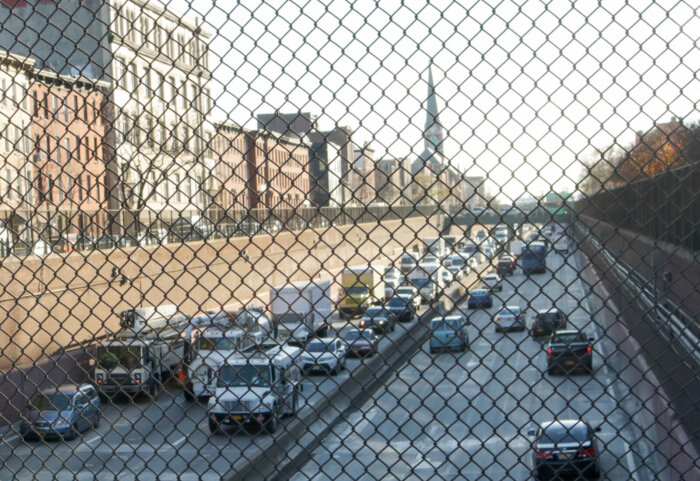
The state-owned portion of the interstate is divided into two portions — BQE North, from the Kosciusko Bridge to Sands Street; and BQE South, from Atlantic Avenue to the Verrazzano Bridge. BQE Central, which includes the crumbling Triple Cantilever, is owned by the city, and is part of a separate infrastructure project.
For more than a year, the city has been gathering feedback on plans to help reconnect the Brooklyn communities divided by the BQE, and is set to release its “Corridor Vision Report” this spring.
According to a DOT fact sheet, the federal grant will help choose proposals from that report and “progress those proposal(s) toward implementation in at least two communities/areas within the BQE North and South.”
“These concept proposals seek to improve the quality of life for residents – especially for disadvantaged communities – through reinstituting connections in the local transportation network, improving access to jobs, services, and green space, and bolstering the safety of nonmotorized transportation users,” the sheet reads.
Though the Corridor Vision Report has not yet been released — and it’s impossible to know which proposals may eventually come to fruition — the results of the city’s many community visioning sessions may provide a glimpse of what’s to come.
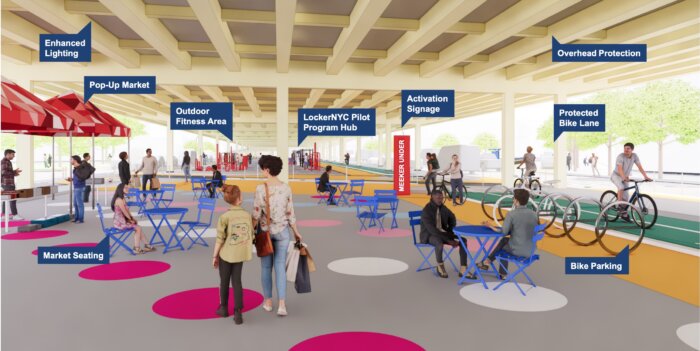
Brooklynites have proposed capping the sunken portions of the BQE to create parks, improving traffic and pedestrian safety under and around the raised portions, and tamping down on air and noise pollution produced by the roughly 130,000 vehicles that traverse the highway every day.
“Our infrastructure should be bringing communities together, not tearing them apart, and that’s why we aggressively pursued these Reconnecting Communities grants, to reshape our city in a way that unites us,” said Mayor Eric Adams, in a statement. “…the BQE Corridor grant we won moves us closer to undoing some of the damage that Robert Moses caused and invests in beautiful, interconnected new public spaces.”
Built over the course of nearly 30 years starting in 1937, the BQE slices through dozens of neighborhoods in Brooklyn, cutting off low-income and minority populations and subjecting them to massive air pollution.
To construct the roadway, Moses — then a powerful city planner — sanctioned the demolition of hundreds of buildings, which displaced thousands of New Yorkers. Nearly 90 years later, the highway is a barrier for Brooklynites trying to cross their neighborhoods, and its many overpasses and exits pose a safety hazard to pedestrians, cyclists, and motorists alike.
Many of the neighborhoods along the BQE are also subject to dangerously high levels of air pollution, and suffer from disproportionate rates of asthma and other health issues as a result.
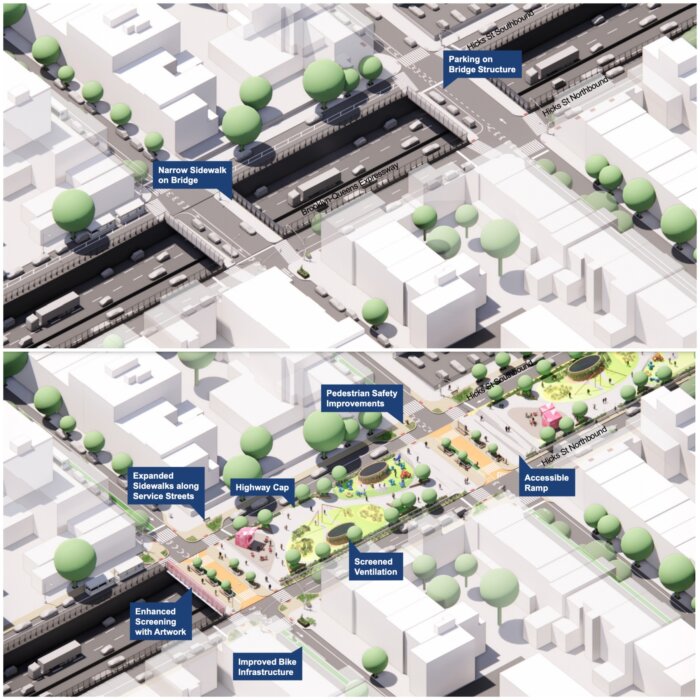
In a joint statement, a coalition of 15 Brooklyn lawmakers praised the grant, which they said would “fund the development of criteria to evaluate proposals, complete conceptual design for those proposals, and fund community engagement throughout the project.”
“It’s long past time to advance a bold, holistic vision for the entire BQE corridor that transforms it from a polluting ‘asthma alley’ to one that sustainably moves people and goods, increases public space, strengthens our economy, and connects our communities,” the pols said. “We’re grateful to the Biden Administration for recognizing our long-standing concerns and awarding New York this grant, and we look forward to partnering across all levels of government to ensure mobility justice and better health outcomes for all who live along the BQE.”
City and state agencies are expected to begin working together to design and implement long-term fixes on the BQE North and South starting next year, according to the city’s Department of Transportation, and work will continue at least through 2032.


